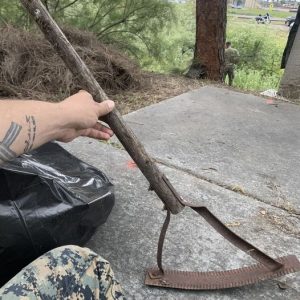If you’re looking to grow a hydrangea tree, there are a few essential tips you should know. And don’t worry, it’s easier than it sounds!
Best Types of Tree Hydrangea
There are different types of tree hydrangeas to choose from. Here are some popular ones:
Hydrangea paniculata ‘Grandiflora’: This variety grows up to 25 feet tall with a 10-foot spread and has beautiful pure white flowers.
Hydrangea paniculata ‘Limelight’: With a height of 6 to 8 feet and a width of 5 to 7 feet, this tree hydrangea features greenish flowers.
Hydrangea paniculata ‘Big Ben’: This dwarf variety only reaches about 3 feet tall and wide, making it perfect for smaller gardens.
Hydrangea paniculata ‘Bobo’: Known for its bicolor flower heads (pink on the bottom, white on the top), this variety grows up to 8 feet in height and width.
Hydrangea paniculata ‘Pinky Winky’: With a maximum height and width of 8 feet, this tree hydrangea has unique flower clusters in deeper pink colors.
Pruning Tips
Proper pruning is key to maintaining a healthy hydrangea tree. For best results, follow these pruning tips:
Trim your tree during late winter or early spring, before the new growth begins.
Thinning out the shrub to five to ten main stems will produce larger flower clusters.
If you want your tree to have a single trunk, choose a main stem and attach it to a sturdy stake. Remove any competing ground stems and buds protruding from the main stem. This will help the trunk grow taller and look more tree-like.
Propagating Tree Hydrangea
If you want to grow more tree hydrangeas, you can propagate them by cuttings. Here’s how:
Select a healthy stem that hasn’t bloomed yet and snip a 6-inch section.
Remove the lower leaves and cut the remaining leaves in half lengthwise.
Dip the cuttings in rooting hormone and plant them in small containers filled with vermiculite, coarse sand, or a mix of both.
Keep the soil slightly moist and cover the container with a plastic bag or dome to retain moisture.
Place the container in a bright spot with indirect light and wait for about a month for the cuttings to develop roots.
How to Grow a Hydrangea Tree from Seed
Growing hydrangeas from seeds is possible but can be challenging. Most gardeners prefer propagating by cuttings. However, if you want to give it a try, here’s what you need to do:
Allow some flowers to develop on the plant and then harvest them and let them dry in paper bags.
After a week, shake the bag to separate the tiny seeds from the flower heads.
In fall, you can sow the seeds directly into the ground or start sowing indoors in early spring.
Spread the seeds over the surface of a container filled with potting soil and keep the soil slightly moist.
Place the container in full sun and expect the seeds to germinate within a few weeks.
Potted and Repotted Tree Hydrangeas
If you have a container-grown hydrangea, it may need to be repotted every two years. Here’s what you need to know:





